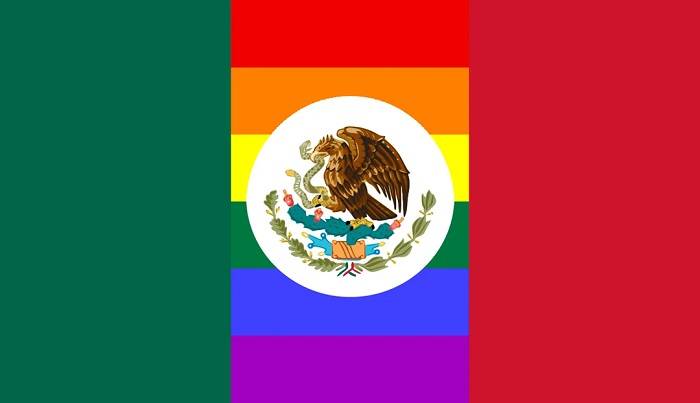Nations around the world often use symbols on their flags to represent their unique identity, heritage, and values. One such symbol that holds deep cultural significance is the Mexican bird depicted on the Mexican flag. With its vibrant colors and rich symbolism, the Mexican bird serves as a powerful emblem of Mexico’s history, culture, and spirit of resilience. In this blog post, we delve into the fascinating story behind the Mexican bird on the flag, exploring its origins, symbolism, and enduring legacy as a cherished national symbol.
The Mexican Flag: A Symbol of Pride and Identity
The flag of Mexico, known as the “Bandera de México” in Spanish, consists of three vertical stripes of green, white, and red, with the national coat of arms prominently displayed in the center of the white stripe. This iconic flag, adopted in its current form in 1968, symbolizes the unity, independence, and diversity of the Mexican people and serves as a source of pride and patriotism for millions of Mexicans at home and abroad.
Origins of the Mexican Bird: The Legend of Tenochtitlan
At the heart of the Mexican coat of arms lies the ancient legend of Tenochtitlan, the legendary city of the Aztecs, which later became the site of modern-day Mexico City. According to Aztec mythology, the wandering tribes of the Mexica people were guided by a divine sign—an eagle perched on a cactus, devouring a snake—revealed to them by the god Huitzilopochtli. This sacred symbol, known as the “Eagle of Tenochtitlan,” prophesied the location of their destined capital and served as a guiding light for the Mexica on their journey to find a new home.
Symbolism of the Mexican Bird: Strength, Unity, and Freedom
The Mexican bird depicted on the flag embodies a wealth of symbolism deeply rooted in Mexican history, culture, and mythology. Here are some key interpretations of its significance:
- Strength and Power: The eagle, with its majestic wings outstretched and its talons clutching a serpent, symbolizes strength, power, and sovereignty. It reflects the resilience and determination of the Mexican people in the face of adversity and celebrates their spirit of independence and self-determination.
- Unity and Diversity: The eagle perched on a cactus, a traditional symbol of Mexico, represents the unity and diversity of the Mexican nation. It signifies the harmonious coexistence of indigenous and mestizo cultures, languages, and traditions that enrich the cultural tapestry of Mexico.
- Freedom and Victory: The eagle’s triumph over the serpent symbolizes the victory of good over evil, light over darkness, and freedom over oppression. It commemorates the historic struggle for independence and the hard-won victories of the Mexican people in their quest for self-governance and liberty.
Evolution of the Coat of Arms: From Aztec Mythology to National Symbol
The image of the Mexican bird on the flag has evolved over the centuries, reflecting changes in Mexico’s political landscape and cultural identity. The modern coat of arms, adopted in 1968, features a golden eagle with its wings spread wide, perched atop a prickly pear cactus, devouring a snake. This iconic symbol pays homage to the ancient Aztec legend of Tenochtitlan while also embodying the ideals of modern Mexico as a sovereign, independent, and united nation.
Cultural Significance: Pride, Heritage, and Identity
For Mexicans, the image of the Mexican bird on the flag is more than just a national symbol—it is a source of pride, heritage, and identity. It evokes a deep sense of connection to Mexico’s rich cultural heritage, indigenous roots, and centuries-old traditions. Whether displayed proudly on government buildings, flown at public celebrations, or emblazoned on clothing and merchandise, the Mexican flag serves as a potent reminder of the enduring legacy of the Mexican people and their contributions to the world.
The Mexican Bird on the Flag
The symbolism of the Mexican bird transcends national boundaries and resonates with people around the world who admire Mexico’s rich history, vibrant culture, and indomitable spirit. From its iconic portrayal in art, literature, and popular culture to its influence on fashion, design, and tourism, the Mexican bird captivates the imagination and inspires admiration wherever it is encountered.
Related Post:
Discovering the Allure of the Swedish Blue
Unlocking the Mystery of When Ducks Lay Eggs
Unveiling the Fascinating Differences Between Male and Female Muscovy Ducks
The Mexican bird depicted on the Mexican flag is far more than just a colorful emblem—it is a timeless symbol of Mexico’s history, culture, and spirit of resilience. Rooted in ancient mythology and imbued with deep layers of symbolism, the Mexican bird embodies the strength, unity, and freedom of the Mexican people and serves as a source of pride and inspiration for generations to come. As Mexicans around the world celebrate their heritage and identity, they proudly display the Mexican flag as a symbol of their enduring legacy and the boundless potential of their nation. So the next time you see the majestic image of the Mexican bird fluttering in the breeze, take a moment to pause, reflect, and honor the rich cultural heritage and indomitable spirit it represents.




